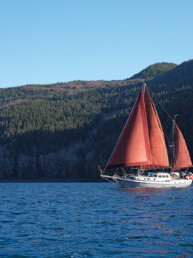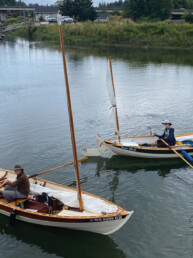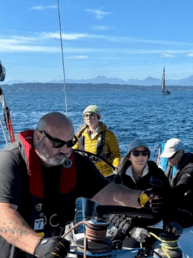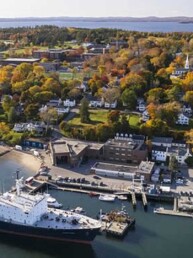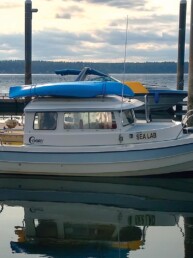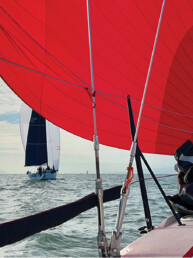This article originally appeared in the May 2021 issue of 48° North.
Little and brown… exciting, don’t you think? Well, I think so, but then I’ve been known to just pick up something messy and examine it for days. When I land a boat ashore near a rocky headland for some intertidal exploring, some of the most common animals I find there are “little brown barnacles” — yes, that is their real name. These tiny creatures, about the size of your little fingernail, live just a few years, and will never get any bigger. They’re so numerous you really can’t take a step without crushing a few! But with barnacles, there is safety in numbers, and in some places, 8,000 of them have been counted in one square foot — a mass of animal life so tightly packed together they appear as a crusty brown carpet.
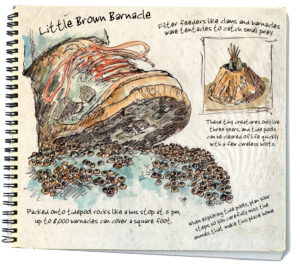
The lowly little brown barnacle is worth a closer look — really. Here in the Salish Sea, there are many other and larger types of barnacle, even one specifically adapted to living attached to humpback whales. All are larger than the little brown. The larger ones were consumed by native peoples for thousands of years. There are several that outwardly look a lot like our barnacle “star this month”, and all are filter feeders living in shell homes of their own making. But the little brown is special in
its own ways.
How do they reproduce? Well, to start with each barnacle is both sexes and each has a reproductive organ that can extend 20 times its own length to ‘connect’ with its closest neighbor. Maybe too graphic to imagine, but I told you this little brown was exciting. Next time you’re on the rocks (you, not the boat), stay off those little browns when you poke around
tide pools. Please!
Larry Eifert
Larry Eifert paints and writes about the Pacific Northwest from Port Townsend. His large-scale murals can be seen in many national parks across America, and at larryeifert.com.

